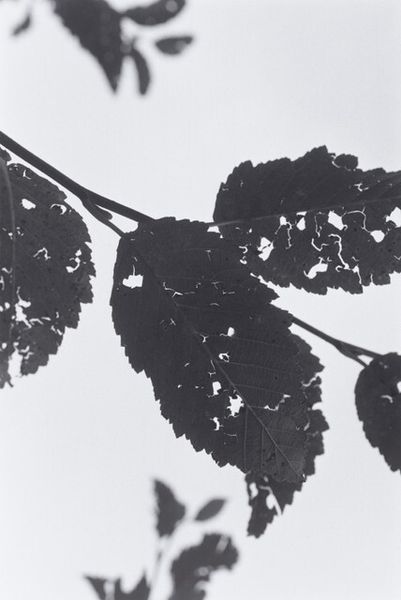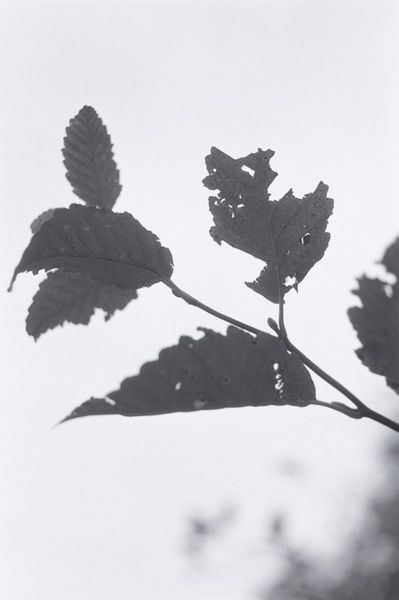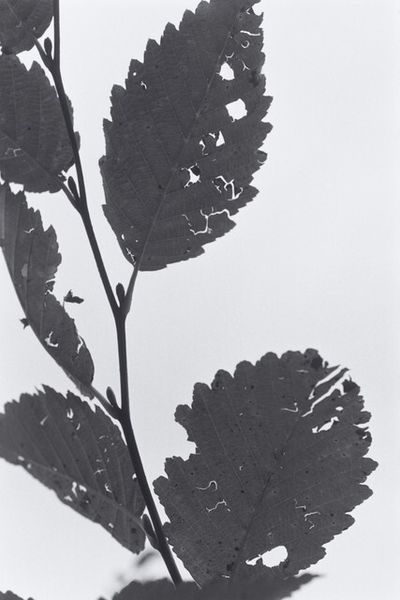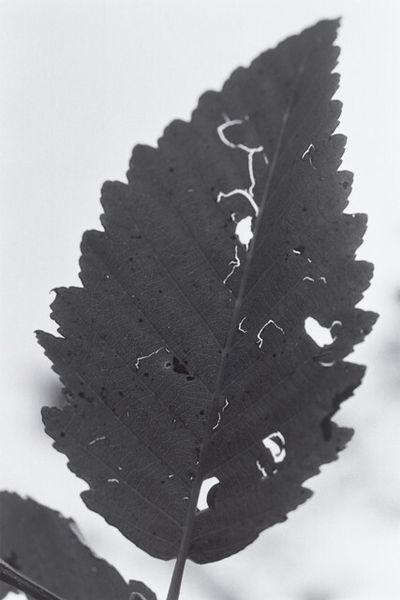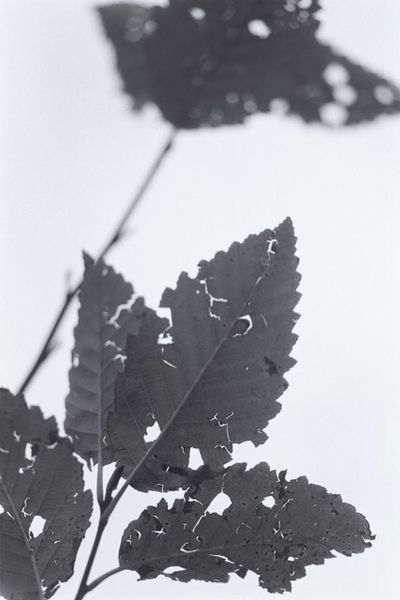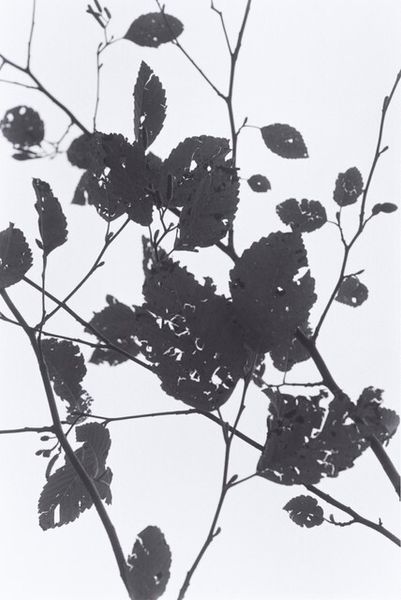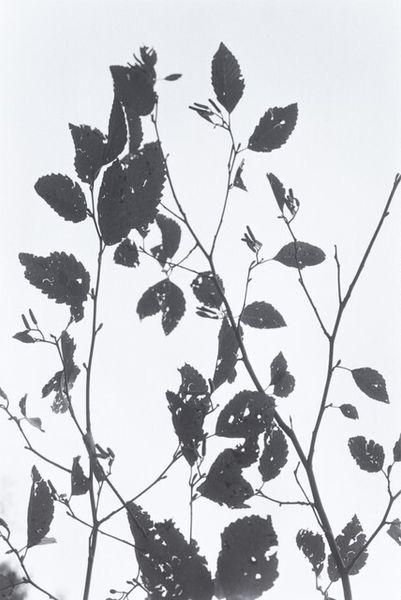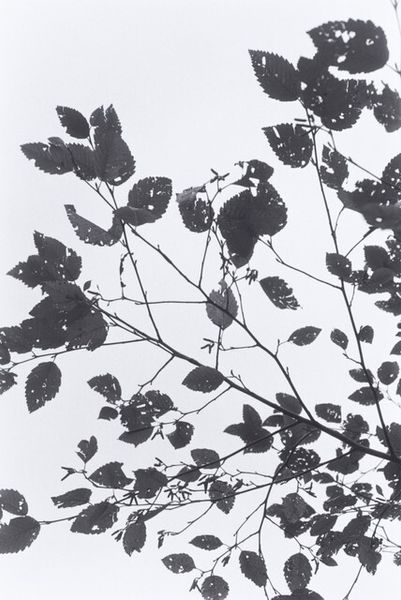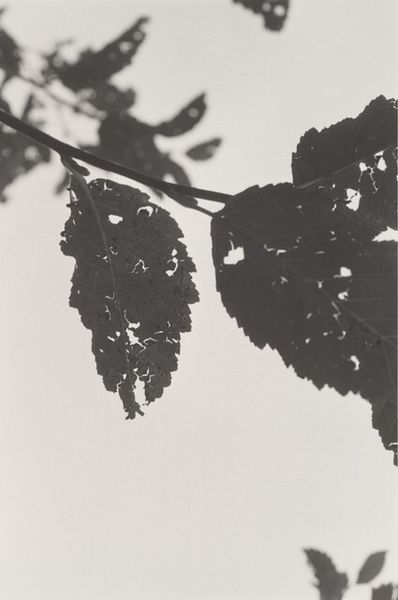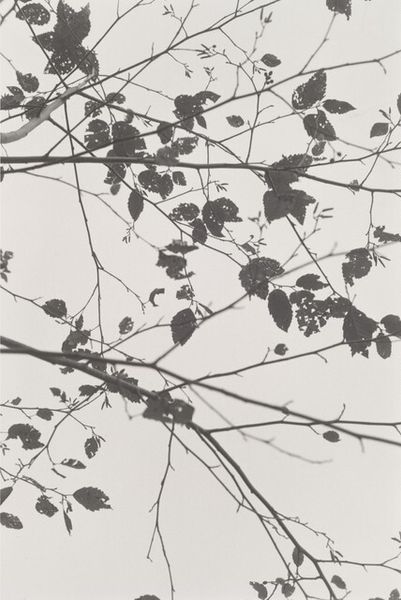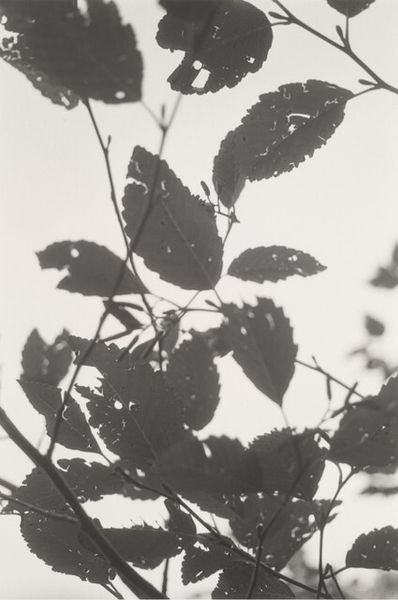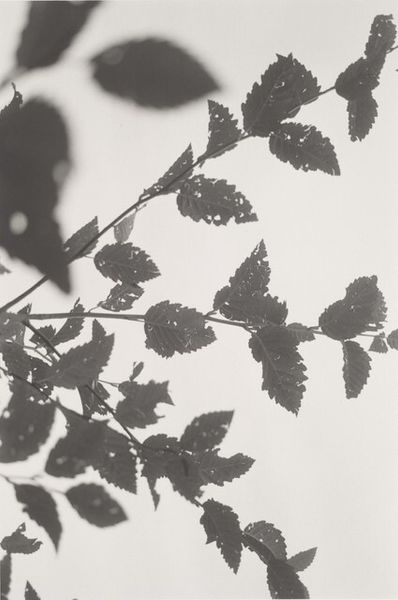
photography, gelatin-silver-print
#
still-life-photography
#
landscape
#
photography
#
macro
#
gelatin-silver-print
#
macro photography
#
nature
#
realism
#
monochrome
Dimensions: image: 23 × 15.3 cm (9 1/16 × 6 in.) sheet: 35.4 × 27.9 cm (13 15/16 × 11 in.)
Copyright: National Gallery of Art: CC0 1.0
Curator: This is Robert Adams's gelatin-silver print, "Neahkahnie Mountain, Oregon" from 2004. Editor: It's hauntingly beautiful, isn't it? That solitary, decaying leaf. It feels like a metaphor hanging there in the air. Curator: Absolutely. Adams’s work often reflects on environmental degradation and the complex relationship between humans and the natural world. This photograph, seemingly simple, carries that weight. The choice to shoot in black and white highlights that tension. Editor: Yeah, without color, you're forced to focus on the texture, the damage...those tiny holes look like constellations in this little dying world. It’s delicate but persistent, you know? There’s life even in decay, resilience against the vast sky. It looks like macro photography. Curator: You are right! The monochrome palette really draws our attention to the stark contrasts and textures, highlighting what theorists like Donna Haraway have written about naturecultures; blurring the line between "natural" processes and the impacts of environmental violence. The very act of framing nature becomes political, asking us to examine how we see. Editor: Totally! And the composition—that off-center placement…it feels deliberate. As though Adams wants us to notice what is usually overlooked, like all the hidden labor and destruction involved with landscape aesthetics. It makes me think, we should really reflect about nature’s ability to reinvent and surprise! Curator: Exactly, his style resists romanticizing nature, choosing realism and prompting the audience to contemplate the ecological concerns deeply embedded in the very land around us, in our relationship with the environment, in questions of class and racial hierarchies. It critiques this complicated idea, what art historian, Erica Carter, calls, "landscape". Editor: I never expected to feel so moved by a single leaf. The fragility! Curator: And yet, as Adams seems to suggest, immense stories are there within what looks forgotten and derelict. Editor: Well said. That little leaf is not just hanging around. It is definitely making a statement about resistance.
Comments
No comments
Be the first to comment and join the conversation on the ultimate creative platform.
